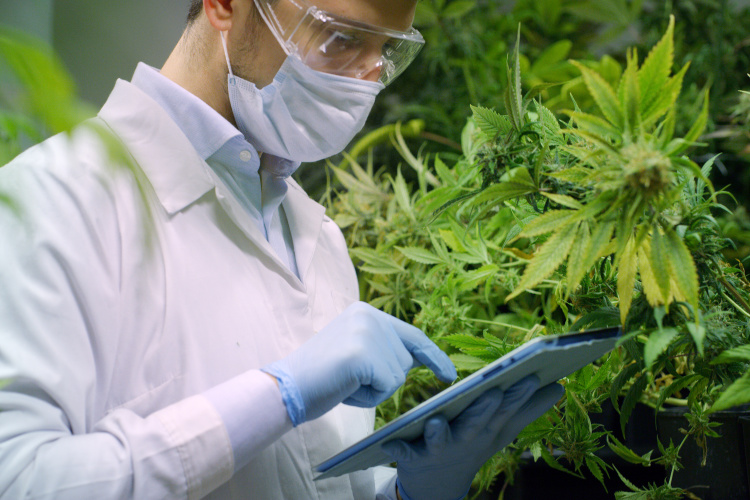To date, researchers have discovered 483 unique compounds in the cannabis plant, including cannabinoids, terpenes, and flavonoids. While much has been talked about cannabinoids and terpenes in recent years, flavonoids have taken a back seat.
However, researchers are now looking more closely at how the therapeutic and pain-relieving effects of cannabis flavonoids can be synthesized and put to use. But, just what are flavonoids exactly?
What Are Flavonoids?
Flavonoids are phytonutrients that are found in nearly all fruits and vegetables. These compounds are primarily responsible for giving fruits and vegetables their color. Flavonoids serve numerous purposes throughout nature like helping flowers attract pollinators or protecting plants from potential threats such as the sun’s damaging UV rays or pests and diseases.

Researchers have discovered nearly 6,000 different types of flavonoids in nature with many of them being unique to specific plants. Cannabis plants contain several flavonoids that are found nowhere else in nature, known as cannaflavins.
Cannabis flavonoids are primarily responsible for giving cannabis plants their pigmentation. For instance, the deep purple color of certain strains is attributed to the flavonoids anthoxanthins and anthocyanins. Research indicates that flavonoids (including cannaflavins) may also have an array of beneficial medical effects including anti-inflammatory, antioxidant, anticancer, and neuroprotective effects.
Flavonoids And The Entourage Effect
Researchers believe that flavonoids may work in synergy with terpenes and cannabinoids in something called ‘the entourage effect’. First discovered in 1980, the entourage effect claims that all of these compounds work together to produce more potent therapeutic and psychoactive effects than they could on their own. However, more research is needed in order to determine if cannabis flavonoids modulate or enhance the effects of cannabinoids and through what pathways they might do so.
Flavonoids Are The Future of Cannabis Research
When it comes to cannabis research, flavonoids have been incredibly understudied. Up to this point, researchers have primarily been concerned with unlocking the full potential of cannabinoids and terpenes.

However, more recently, researchers have begun to look at the role that flavonoids play in the therapeutic effects of cannabis, both on their own, and in relation to other compounds as part of the entourage effect. Considering that some of the flavonoids found in vegetables act as antioxidants (think green superfoods), researchers are wondering if cannaflavins may also have beneficial properties for human health.
Could Flavonoids Play a Role in Pain Relief?
In 1986, Marilyn Barrett, a researcher from the University of London was able to isolate two cannaflavins and found them to have extremely potent anti-inflammatory effects. More specifically, the anti-inflammatory effects produced by Cannaflavin A and Cannaflavin B are believed to be up to 30x more potent than those produced by Aspirin.
However, despite their effectiveness, the amount of cannaflavins in cannabis is actually very small. Cannaflavins are believed to make up less than 0.15% of the fresh weight of cannabis. This means that massive amounts of marijuana would have to be consumed in order for these effects to take place.

To work around this, researchers have begun to metabolically engineer cannaflavins separately from the cannabis plant. By successfully identifying the genes in cannabis responsible for producing cannaflavins, researchers have been able to produce them in isolation.
Companies have already begun to explore commercial opportunities for putting this new research to work. Cannabis molecules stop inflammation at the source and do not pose the same health risks as the over-the-counter NSAIDs that people typically rely on to fight inflammation (aspirin, ibuprofen, advil). Flavonoids could very well be the next big thing in medical cannabis science.
Want to learn more? We’d love to help. Stop by our Sherman Oaks dispensary today.




